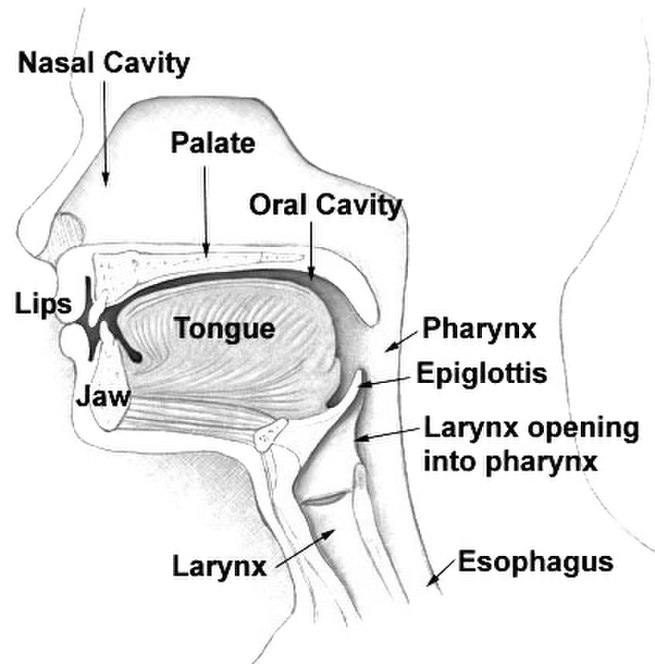Pharynxnoun
(anatomy) The part of the alimentary canal and respiratory tract that extends from the back of the mouth and nasal cavity to the larynx and esophagus.
Pharynxnoun
The part of the alimentary canal between the cavity of the mouth and the esophagus. It has one or two external openings through the nose in the higher vertebrates, and lateral branchial openings in fishes and some amphibias.
Pharynxnoun
the passage to the stomach and lungs; in the front part of the neck below the chin and above the collarbone
Pharynx
The pharynx (plural: pharynges) is the part of the throat behind the mouth and nasal cavity, and above the oesophagus and trachea (the tubes going down to the stomach and the lungs). It is found in vertebrates and invertebrates, though its structure varies across species.
Larynxnoun
An organ of the neck of mammals involved in breath control, protection of the trachea and sound production, housing the vocal cords, and that is situated at the point where the upper tract splits into the trachea and the oesophagus/esophagus.
Larynxnoun
The expanded upper end of the windpipe or trachea, connected with the hyoid bone or cartilage. It contains the vocal cords, which produce the voice by their vibrations, when they are stretched and a current of air passes between them. The larynx is connected with the pharynx by an opening, the glottis, which, in mammals, is protected by a lidlike epiglottis.
Larynxnoun
a cartilaginous structure at the top of the trachea; contains elastic vocal cords that are the source of the vocal tone in speech
Larynx
The larynx (), commonly called the voice box, is an organ in the top of the neck involved in breathing, producing sound and protecting the trachea against food aspiration. The opening of larynx into pharynx known as the laryngeal inlet is about 4–5 centimeters in diameter.



















